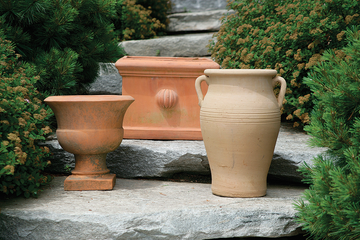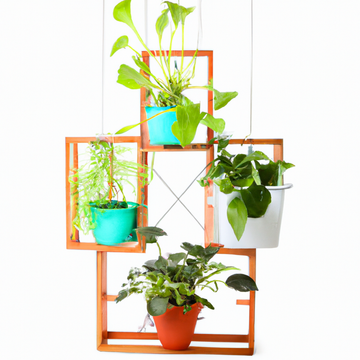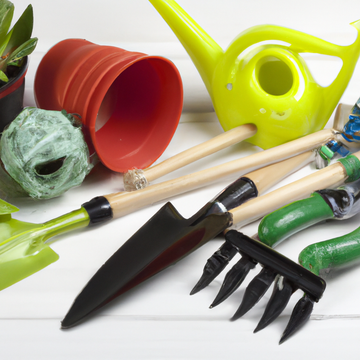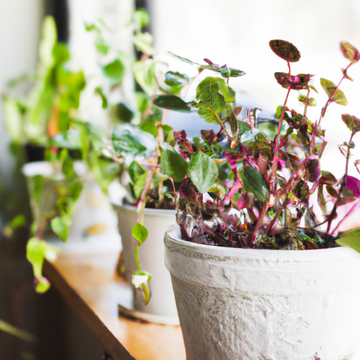
For a good reason, terracotta plant pots have been a mainstay of gardens for ages. These traditional planters comprise the same clay used for thousands of years to make pottery and ceramics. In addition to being useful, terracotta pots give any garden a dash of country charm. This blog post will discuss why terracotta planters are essential for any garden.
What are Terracotta Planters?
Terracotta clay, a form of clay found worldwide, is used to make terracotta pots. In Italian, the word "terracotta" means “baked earth”. Unglazed and porous earthenware, terracotta, makes an excellent material for planters.
Small pots for solitary plants and enormous urns for trees and shrubs are just a few of terracotta planters' different sizes and styles. Terracotta's timeless orange-brown shade provides warmth and richness to any garden, while the porous construction promotes proper drainage and aeration of plant roots.
Due to the high density of the clay and its porous character, which retains moisture, the pots are resistant to frost and allow air to reach the roots. This indicates that the terracotta pots will provide plants with the ideal conditions for growth to flourish and guard against soil disease and root rot.

Benefits of Terracotta Planters
- Aeration and Drainage - Because terracotta is a porous material, water, and air can pass through the pot's walls. This encourages soil aeration and prevents water from collecting at the bottom of the container, which can cause root rot.
- Natural Material - Natural materials like terracotta are free of synthetics and chemicals that could harm plants. It is, therefore, a sustainable option for organic farming.
- Durable - Planters made of terracotta are sturdy and long-lasting even in adverse conditions. Terracotta planters can be a durable addition to any garden with the right upkeep and care.
- Rustic Charm - Terracotta is a common material in Mediterranean and Tuscan-style gardens because of its timeless orange-brown hue, which gives any garden a rustic appeal.
- Versatile - Terracotta planters are versatile in any landscape because they are available in various sizes and styles. There is a terracotta planter for every plant and garden design, ranging from small pots for individual plants to gigantic urns for trees and bushes.
- Eco-Friendly - Terracotta is an excellent alternative for individuals looking for an environmentally friendly potting material for their indoor plants. Terracotta is completely biodegradable because it is made of natural clay. Broken terracotta pots can also be reused to make attractive planters, succulent container gardens, fairy gardens, and other things.
How to Care for Terracotta Planters?
- Watering - Due to their porous nature, terracotta pots dry up more quickly than other varieties. Regularly water your terracotta-potted plants, especially when the weather is hot and dry.
- Soil - To prevent water from collecting at the bottom of your terracotta pots, fill them with soil that drains effectively. Root rot and other plant diseases may result from this.
- Cleaning - Over time, the surface of terracotta planters provides a perfect environment for algae and fungus to grow. s To remove any buildup, routinely clean your planters with a water and vinegar solution or a light soap.
- Winter Care - Planters made of terra cotta are brittle and prone to breaking in cold weather. Terracotta plant pots should be moved indoors or to a protected spot during the winter to avoid damage.
- Repotting - The porous nature of terracotta allows it to absorb minerals and salts from the soil with time, which can accumulate and harm plant roots. To avoid this, repot your plants in fresh soil and a clean clay container every few years.
Decorating Terracotta Planters
In addition to being useful, terracotta planters are wonderful blank canvases for artistic expression. Terracotta pots are now necessary for your outdoor garden and indoor space. Here are some suggestions for terracotta planter decorations.:
Paint - Use acrylic paint to give your terracotta planters a splash of colour. You can paint the entire pot or just the surface; patterns and designs work well.
Decoupage - Use decoupage adhesive and paper cutouts to give your clay planters texture and pattern. Printed napkins, colourful tissue paper, or even worn-out book pages can be used.
Stencils - Use stencils to add patterns and decorations to your terracotta pots. You can use spray paint, acrylic paint, or even a permanent marker to make your designs.
Mosaics - On the outside of your terracotta pots, make a mosaic pattern out of tiny pieces of tile or glass, and this is a fantastic way to give your landscape some colour and texture.
Etching - To scratch patterns or motifs into the surface of your terracotta planters, use a tool like a Dremel. This is a wonderful way to give your garden a unique touch.




